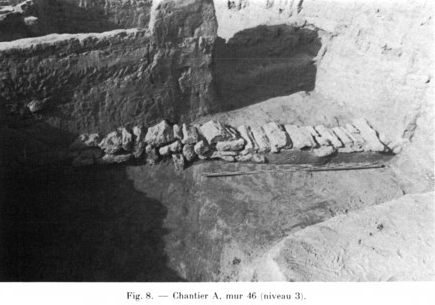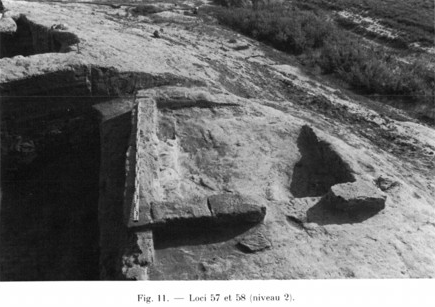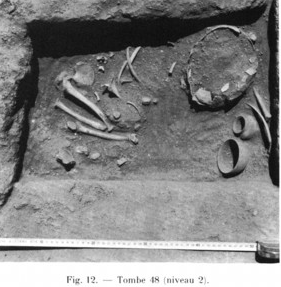|
Other Archaeological Sites / The Neolithic of the Levant (500 Page Book Online) Ancient Tell Mashnaqa
Pre-History and Archaeology Glossary
Excerpts and Definitions and Addendums:
Southern Mesopotamian-style Uruk pottery is introduced and a large circular structure with mudbrick walls 3.5 metres thick is erected. Perhaps a small fort, this structure, now much eroded, has a bastion-like brick massif on the northwest; regular openings in the wall may indicate the presence of an additional outer wall no longer extant ... (Page 167-8) ... Tell Mashnaqa (circa 500-4900 BC) covers four hectares but it is doubtful whether its entire expanse was inhabited simultaneously. The earliest stratum had rectangular mudbrick houses, occsionally reinforced with buttressess along the exterior facade, with small rooms containing fireplaces, grinding stones, mortars and painted pots. Strata 2-3 was a shift of occupation to other parts of the mound when the area formerly inhabited became a refuse midden and later a burial ground. Subsequently the site was abandoned for hundreds of years but rebuilt in the fourth millennium, with a large tripartite building measuring about 11.5 X 10.5 metres. Remarkable finds in the Ubaid levels were the fragments of two pottery boat models, strongly suggesting that people along the Khabur River already made use of boats for transport and fishing circa 5000 BC, if not before. The Mashnaqa models represented long, narrow canoes with pointed sterns, probably built of bundles of reeds and coated with bitumen on the outside to make them waterproof ... Pictures: Mashnaqa 1985 : Rapport Préliminaire sur la 1re Campagne de Fouilles |



